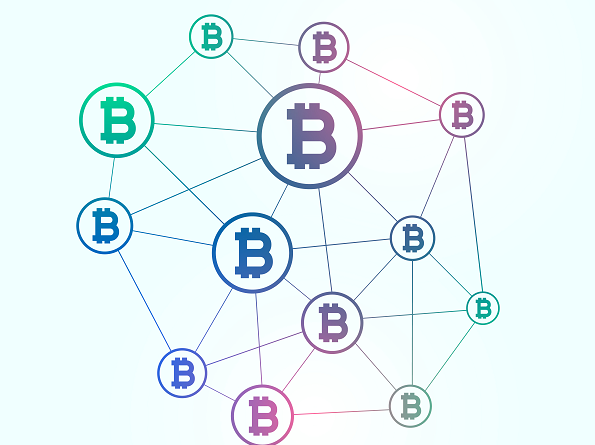How to learn Python programming: A-Z guide for beginners

Just imagine creating a game with larger-than-life characters and altering it according to your whims and wishes – sounds fascinating, right? Well, this is possible with Python programming!
Python has emerged as a shining star of the coding world. The story of how it all happened is an exciting one. During a lazy Christmas vacation, Guido Van Rossum, a Dutch programmer, had a eureka moment while making a hobby project and created Python! Why did he choose this particular name for the language? He is a die-hard fan of Monty Python, that’s why! Python language is a high-level and general-purpose programming language i.e., it runs on a wide variety of applications and across multiple domains. Let’s dive in deeper into the amazing world of Python.
How does Python work?
1. Interpretative language: Python not only helps you save time, it also makes sure all your codes are error-free. How? The interpreter in Python executes the code (after translating it into a ‘bytecode’) in the machine. Languages like Java, C, C++, and Visual Basic are compiler based while Python is interpreter based. This means that Python works on debugging the codes without the hassle of a compiler. Python’s motto of maximizing productivity ensures that the programmer doesn’t have to start all the way from the source code.
2. Standard query language (SQL): SQL is a database engine in Python and consists of information about the storage. The standard library in Python stores all previously written codes. It also shows how through Python’s massive memory management, documentation becomes an easy process.
3.Object-oriented Programming (OOP): A Python course equips you to understand metaprogramming. This basically means that a Python code can adapt itself to the real world. While procedural-oriented programming lets you write simple and short programs, the OOP feature of the Python language lets you increase the complexity of programs. Handling extensive codes isn’t a big deal for Python!
4. Cross-platform operations: The Python language can run on Windows, Mac, and Linux which doesn’t just make a Python developer a jack of all codes, but also enables the portability of codes without any difficulty. The glue code feature in Python is a specialized interpretative language which connects various systems. This reaffirms Python’s ‘batteries included’ philosophy which ensures that a Python user will find solutions to each and every problem on Python.
5. Open source: Python welcomes every coder with open arms! It is free to use as well as quite easy to pick up on. Python’s syntax doesn’t have any strict rules and happens to be very readable. This means that during a Python course and during coding, you won’t have to waste too much time on refining the code lines.
What are the various fields in which Python programming is used?
1. Data science: Python efficiently tackles the challenges posed by big data, and data analysts swear by Python’s OOP principles. Python also has a library dedicated to data analysis called Pandas, as well as the NumPy package that condenses big data for convenience.
2. Software development: Python is increasingly becoming the go-to choice of support language by software developers. A Python developer facilitates project management, compilation, and testing in this field.
3. Machine learning: Python helps in the application of appropriate statistical techniques and fulfilling engineering needs in this field. You can visualize and summarize datasets, make predictions as well as implement algorithms through Python. The scikit-learn library in Python is the most efficient tool for machine learning. You can also extend its knowledge to that of scientific modeling and computing with Python’s various numerical functions.
5. Web development: Python’s frameworks of Django and FLASK are used as protocols for internet and web development. Python projects such as the ‘Pyjs’ help other languages to be executed in web browsers. Owing to Python’s standard library, backend work during web development becomes breezy!
6. Game development: The knowledge of Python will not only enable you to create executable applications, it will open a whole new world of fantasy games for you. Pygame is a part of the Python programming language which runs programs using graphics and sounds. Have you ever heard of Vega Strike, Disney’s Toontown Online, or PySoy? All these games are made using Pygame! Once you are familiar with Python’s loops and variables, creating a game through Pygame becomes as easy as pie. Pygame is a great starting platform if you plan to become a game developer; it will give you the leverage to create bigger and cooler games!
These are the features of Pygame that help you create your own fun game:
1. SDL– The Simple DirectMedia Layer is a vast library in Pygame. It is supported on a number of platforms and facilitates the access to audio and graphics hardware. Apart from all of this, it is also highly portable.
2. Multiple modules: Pygame has a module for every function that you’ll be needing for game creation. Such as the pygame.font through which you can access the system fonts or the pygame.surface which manages the screens.
3. GUI: The Graphical User Interface function in Pygame lets you project images and colors on the screen. There are a number of GUI frameworks in Python to choose from. Such as the PyGUI which is by far the simplest of all GUIs. A Python developer has access to a huge library of GUIs and previously written games that are a life-saver during a developer’s block!
4. Game loop: Through this loop, the code completes three stages. These include handling events, updating game states, and putting up the game on the screen.
5. Drawing functions: In Pygame, one can choose from a variety of shapes of rectangles, circles, and lines. These are known as drawing primitives and the functions for the same can be executed by putting a command in the IDLE (Integrated Development and Learning Environment) file editor.
6. Sounds: Pygame comes with inbuilt sound modules that you can put in your game. However, Pygame also supports WAV, MP3, and OGG files which means that any sound of your choice can feature in your game.
I am hooked, how do I start?
Have a wicked idea brewing in your head? Unleashing the Van Rossum inside you is an easy thing with these options:
1. Online training: With its increasing popularity, there are multiple Python online courses to choose from. Internshala’s Python language course covers a wide range of subjects such as the SQLite database, IDLE, principles of OOP, and is essentially a Python tutorial for beginners. It also gives you a golden opportunity to create your own fantasy cricket game!
2. Online resources: There are various online resources that you can use to understand Python basics and build an out-of-the-box project of your own. You can listen to podcasts, read free books online, or take up Python challenges to have some fun. Additionally, you can also browse through different Python packages and Python’s official website.
3. Join the community: Through a Python certification or creating a personal project, you can become a part of the Python community and online forums. Not only will this give you immense support, you’ll have access to a variety of ideas and coding hacks.
4. Get your hands dirty: Once you’ve learned Python, trying your hand at an internship is the best way to test your learnings! With these Python internships on Internshala, you can hone your programming skills as well as find your niche!
Now that you know the various Python jobs that are waiting for you, I see no reason why learning Python shouldn’t be at the top of your to-do list! Go ahead and go crazy with the magic of Python!
Image credits: learnstartup.net



